Photo
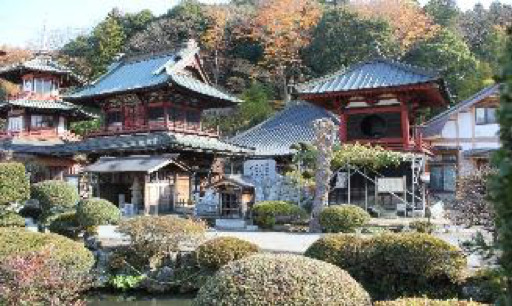
Enzuin Temple
Enzuin Temple is thought to have been built in 1467 and was originally dedicated to Kannon Bodhisattva. A statue of this deity dating to the temple’s founding is still kept within its walls. After 1633, however, the temple converted to the Soto Zen sect at the wish of the ruler Akimoto Yasutomo (1580–1642).
Among the many halls of worship in Tsuru, Enzuin Temple possesses the greatest quantity of Edo period (1603–1867) structures. This includes a bell tower built in 1751 and a bell forged in 1668, the Gakuyuden Gate built in 1748, and the Yakushi Hall dating to the early seventeenth century. Of particular interest is the 350-year-old temple bell, which was forged by the greatest craftsman of its day. Large numbers of such bells were requisitioned during the twentieth century for munitions production, but this bell was one of the few to escape such a fate. It is now a Cultural Property of the city of Tsuru.
The temple grounds also hold an old stone bridge that had spanned the Kachu River for hundreds of years before being relocated here in the early twentieth century. A poetry stele bears the haiku the poet Matsuo Basho (1644–1694) wrote when he visited the temple. In the Main Hall are several paintings attributed to the famous nineteenth-century painter Katsushika Hokusai (c. 1760–1849).
※この解説文は観光庁の地域観光資源の多言語解説整備支援事業で作成しました
0 notes
Photo

Choanji Temple
Long ago, the ground upon which this temple now stands was occupied by a villa of the Oyamada clan, the warrior family that ruled this area from the thirteenth to the sixteenth century. When they left, the new ruler, Torii Mototada (1539–1600), decided to convert the old villa to a temple on the recommendation of the famed Buddhist priest Shoyo Shonin, whom he also designated as head priest. Such fame accrued around Shoyo and the temple that several decades later the shogun Tokugawa Ieyasu (1543–1616) encouraged him to found a new Buddhist sect. This was a high honor and certain to be a great success given the support of the shogun himself. Shoyo declined, however, and instead requested a simple tea urn as a gift. Ieyasu granted his wish, and the urn still remains in possession of the temple to this day.
Choanji Temple was lost to fire several times over the centuries, but the current Main Hall dates to 1725. It is the oldest hall of worship in Tsuru whose date has been confirmed and is also considered one of the best in the whole prefecture.
※この解説文は観光庁の地域観光資源の多言語解説整備支援事業で作成しました
0 notes
Photo

Takao Shrine
Located in the corner of a small park along the Kachu River just a few minutes’ walk from Yamura First Elementary School, this shrine sits quietly amid the whispers of flowing water. Its entrance is marked by a large stone with the shrine’s name etched into its surface in bright red characters. Although the shrine hall is relatively new, the shrine itself has existed for nearly 200 years. According to the story, Takao Shrine was established to venerate a wooden statue found floating in the Kachu River by a local water-wheel maker named Yasui Yoshihiro. It was named Takao Shrine because it faces Mt. Takao, a mountain that has been the object of religious worship for centuries.
Takao Shrine’s main festival is held each year on the night between November 30th and December 1st. A large bonfire is lit to help visitors escape the cold winter air. Local merchants display goods in an open-air market, hearkening back to the days when this area was Tsuru’s central market street. The festival is an excellent chance to mingle with the city’s residents and to purchase souvenirs.
※この解説文は観光庁の地域観光資源の多言語解説整備支援事業で作成しました
0 notes
Photo

Ishibune Shrine
This shrine is best known for possessing one of Japan’s most unusual objects of worship: the preserved head of the fourteenth-century Prince Morinaga. This prince ran afoul of the powerful warrior Ashikaga Tadayoshi. He was captured near present-day Tokyo and beheaded in Kamakura. A princess who was present at the execution wrapped his head in a cloth and fled, eventually arriving in Tsuru, where she passed away. In the early seventeenth century, the bare skull was covered in a layer of lacquer and sawdust in order to reconstruct Morinaga’s facial structure, and polished crystals were inserted to represent eyes. Due to the superb craftsmanship and the fact it has been revered for so long, it was designated a cultural artefact of the city. The head is put on display once per year, on January 15th.
Ishibune Shrine is also well known as a place where musasabi flying squirrels live. These nocturnal animals reside in the trees around the shrine, venturing out in the evenings to search for food. There are few areas where these animals live so close to people, and visitors to the shrine have a good chance to catch a glimpse of one.
※この解説文は観光庁の地域観光資源の多言語解説整備支援事業で作成しました
0 notes
Photo
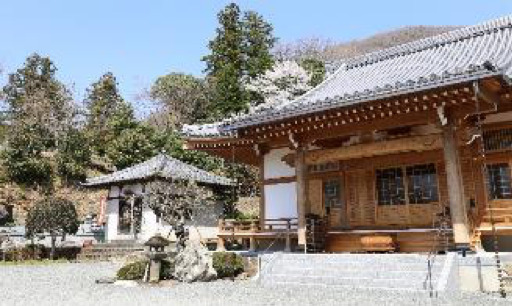
Keirinji Temple
This Zen temple was founded as the family temple of the Oyamada clan, who ruled Tsuru from the thirteenth to the mid-sixteenth centuries. The temple was founded in the 1390s when the Zen priest Kakuchi came here to spread the teachings of the Rinzai Zen sect. Lord Oyamada Tomiharu was so moved by Kakuchi’s virtue that he converted to the sect and founded Keirinji. The Oyamada family graveyard still remains on the temple’s grounds.
At the top of the stone steps leading to the Main Hall is an ancient cherry tree of the early-flowering type, said to have been planted by Kakuchi himself. Due to its age and historical importance, the tree has been designated as one of the city’s natural heritage sites. On the hillside behind and to the left of the temple’s Main Hall lies a small pond known as Kanogaike, whose name literally means “Wish-Granting Pond.” It is so-named because it’s believed that those who come here to pray for rain will have their wish miraculously granted.
※この解説文は観光庁の地域観光資源の多言語解説整備支援事業で作成しました
0 notes
Photo

Hokyoji Temple
Founded in 1356, this quiet temple located near Higashi Katsura Station provides a calming environment in which to experience the nature and history of Tsuru. It is the largest historic structure in Tsuru as well as the oldest of those whose date of construction has been confirmed. The temple itself is composed of several beautifully constructed traditional wooden buildings. The most noteworthy is the kuri, or the temple kitchen.
Behind the temple lies Hokyoji Mountain, a popular destination for flower viewing. The slopes directly behind the main hall of the temple are covered in a field of yamabuki grass (Kerria japonica), whose bright yellow flowers bloom at the beginning of May. As this flower is rare in the area, it has been declared as a natural monument. The mountain is also covered with a number of cherry trees, making it a popular destination in the springtime as well. The view from the top is worth seeing, offering a panorama of the surrounding countryside.
※この解説文は観光庁の地域観光資源の多言語解説整備支援事業で作成しました
0 notes
Photo
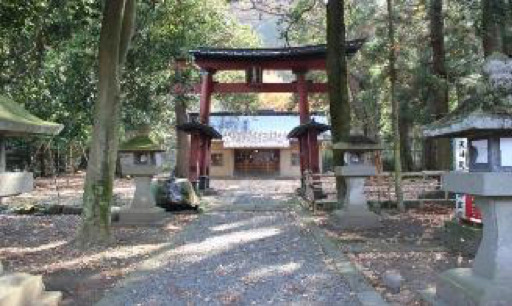
Oide Shrine
This shrine is named after nearby Oide Mountain, where a mysterious event inspired its founding. According to legend, in the year 703 the local villagers went to the mountain’s summit to investigate strange lights that appeared there every night. While they searched for the lights’ source, a man appeared near a dragon-shaped rock and told them that founding a shrine at the spot would lead to tranquility in the village. They followed his advice; however, in 929 the shrine was moved to its current location at the foot of the mountain.
The present shrine building was constructed in 1768 by several master craftsmen from Edo (present-day Tokyo). Though the resulting structure was relatively small, every inch of its surface, except the columns, was carved with exquisitely detailed figures. Similar shrines had become common by the early nineteenth century, but this shrine is noteworthy as one of the first examples to appear in this region.
Oide Shrine’s principal festival is Hassaku (September 1st), the biggest and most popular of Tsuru’s annual festivals. On that day, the Oide Kagura Float is brought out and paraded through the city accompanied by traditional dance performances. The float is more than 150 years old and as exquisitely carved as the shrine building.
※この解説文は観光庁の地域観光資源の多言語解説整備支援事業で作成しました
0 notes
Photo
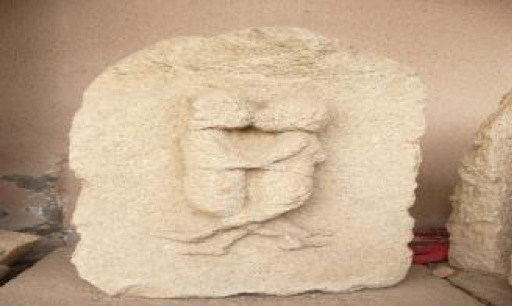
Relics of the Fuji Road
Scattered throughout the city of Tsuru are a large number of weathered stone statues and stelae. Many of these can be counted among the relics left behind by pilgrims on their way to worship at Mt. Fuji. Though the mountain had long been an object of nature worship, a new folk religion called Fujiko appeared in the seventeenth century, taking Mt. Fuji as its principal object of worship. Central to the Fujiko belief was the requirement that believers climb the mountain once in their lifetime, and so through this period great numbers of believers passed through Tsuru along one of the primary routes from Edo (present-day Tokyo) to Fuji.
Typically, the statues and stelae left behind by Fujiko believers feature images of a wide variety of deities. Most are associated in some way with travel, such as Jizo, the guardian of travelers. Of particular note are the two-figure Dosojin stelae, which depict the guardian spirit of travelers, Dosojin, as two embracing figures. The earliest of these dates back to 1695. Examples are found in their greatest concentration in Tsuru, though other examples have been found in the surrounding prefectures as well.
※この解説文は観光庁の地域観光資源の多言語解説整備支援事業で作成しました
0 notes
Photo

Tahara Falls
This waterfall was originally formed from the remains of one of Mt. Fuji’s eruptions, over which the Katsura River came to flow. Along either bank are stone columns formed when the lava cooled suddenly, creating vertical cracks that resulted in their distinct shape.
The current appearance of the waterfall has changed greatly since the nineteenth century. For as long as people could remember, it consisted of two drops, an upper and a lower. The lower fell a total of 20 m straight down and extended 7 m across. It is said that in those days the falls made such noise that one could hear it all the way from Uenohara, some 25 km away. In 1898, however, both shores collapsed due to erosion, destroying the lower drop. Further collapses occurred as a result of the 1923 Great Kanto Earthquake that leveled much of Tokyo, causing the remaining drop to move 30 m further upstream. In 1956 an artificial embankment was installed to prevent further erosion, and so the Tahara Falls came to their present shape.
※この解説文は観光庁の地域観光資源の多言語解説整備支援事業で作成しました
0 notes
Photo

Ushiishi Archaeological Site and Clay Figurine
Among the many historical relics to be found in the city of Tsuru are those attributed to the Jomon people. This was a prehistoric society that existed in Japan from approximately 14,000 to 300 BC.
One of Tsuru’s many relics from this period are the Ushiishi, a group of rocks arranged in a ring shape. The circle has a diameter of 50 m and is located in the Atsuhara area, near where the Katsura and Ohata rivers meet. This relic is one of the largest of its type discovered in eastern Japan. The Ushiishi date back roughly 5000 years to a time when the climate was cooling and Mt. Fuji was very active. As the circle is located at a spot where Mt. Fuji is barely visible, it has been suggested that it had some religious connection to the mountain and was possibly used to pray for protection from eruptions.
Another important relic of this time is the Dogu, a human clay figure with ear decorations, which was excavated at the Nakaya Archaeological Site in Ogatayama. It features a heart-shaped face, and its entire surface is covered in a red pigment. This figure is known specifically for its ear decorations, which provide clues to the customs of the people who made it.
※この解説文は観光庁の地域観光資源の多言語解説整備支援事業で作成しました
0 notes
Photo
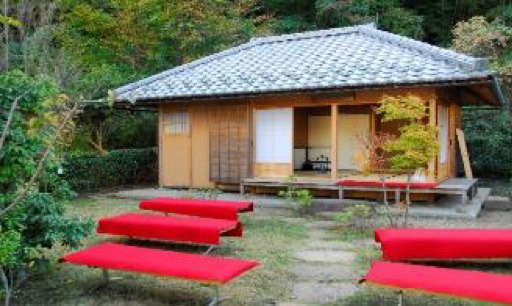
Torinken: Matsuo Basho’s Tsuru Residence
This small building is a reconstruction of Torinken, or “Peach Grove House,” where the famed haiku master Matsuo Basho (1644–1694) once stayed. Born to a samurai family, Basho abandoned his status and its privileges to pursue a literary life. During his career, he introduced minimalist aesthetics to the haiku form, transforming what had been considered a simple literary pastime into a sophisticated art form.
Basho came to this area early in 1683. He was invited by his pupil Takayama Den’emon (1649–1718), the chief retainer of the lord of Yamura, after Basho lost his home in a large fire that destroyed much of Edo (present-day Tokyo). During his five-month visit, he stayed in a small house on the outskirts of Takayama’s estate. Here the two held several poetry gatherings during which many famous verses were composed. Stone monuments bearing these poems can be found all around Yamura. Though the original Torinken was destroyed long ago, this reconstruction was completed in 2004 in remembrance of Basho’s stay in Tsuru, and to serve as a place of learning.
※この解説文は観光庁の地域観光資源の多言語解説整備支援事業で作成しました
3 notes
·
View notes
Photo

Yamuramachi Station Building
The Yamuramachi Station Building on the Fujikyuko Line was constructed in 1929 using a Western architectural style. It exemplifies the spirit of modernization that was sweeping Japan at the time. Constructed primarily of wood, a layer of white mortar covers the exterior walls, and the roof’s surface is flat rather than curved in the style of many traditional architectural forms. Atop the roof sits a weather vane with a “y” for “Yamura” cut into it. A residence for station workers is attached on the north side of the building.
The station’s boarding platforms are sheltered by an awning supported with columns. These are made from rails repurposed from an out of service line from the Meiji period (1868–1912). Their dates of fabrication can still be seen printed on their surfaces. As the station was built at the beginning of the Great Depression, these columns represent not just an aesthetic choice but also an example of the cost-cutting ingenuity of the people of Tsuru in times of economic trouble.
※この解説文は観光庁の地域観光資源の多言語解説整備支援事業で作成しました
0 notes
Photo

Kagura Dances
Kagura, literally “entertainment for the gods,” is a form of traditional dance tracing its history back to one of Japan’s oldest legends. As the story goes, long ago the sun goddess Amaterasu no Omikami hid herself in a cave to sulk after a dispute with her brother, thus casting the world into darkness. To coax her out from hiding, the goddess Ame no Uzume performed a dance in front of the cave, making the other gods laugh. Amaterasu was intrigued with their laughter and so came out to watch, bringing light back to the world. Kagura developed as an imitation of Ame no Uzume’s dance.
Today a vast number of kagura lineages survive, each with their own unique components. In Tsuru alone there are thirty varieties of dance. Among the best times to witness local kagura is during Oide Shrine’s Hassaku Festival on September 1st. Here, the shrine’s ornately carved kagura float is paraded through the city accompanied by performances of the shrine’s own traditional dances that date back more than 200 years.
※この解説文は観光庁の地域観光資源の多言語解説整備支援事業で作成しました
1 note
·
View note
Photo
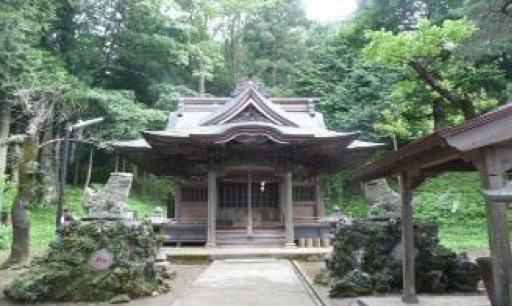
Dazaifuten Shrine
A branch of the influential Daizaifu Tenmangu Shrine, the earliest records indicate this shrine was here as early as the fifteenth century. It has been rebuilt several times. The current structure was built in 1864, the previous one having been lost to fire in 1837. It was constructed thanks to the fundraising efforts of Amano Hanzo, a prominent local figure.
The spirit enshrined here is that of Sugawara no Michizane (845–903), a scholar and statesman who lived more than 1000 years ago. Today he is revered as a spirit of learning and is often featured in the prayers of those seeking success in school.
The shrine owes its beautiful appearance to the famous team of master craftsmen Ozawa Hanbei and his adopted son Fukuda Toshihide. Their unique style of exquisitely detailed carving can still be seen on many shrines and temples to this day. The work they produced for this building is considered among their best. The images depicted include a wide variety of animals. There are dragons amid clouds along the front, as well as cranes, chickens, rabbits, and tigers along either side. Towards the back are two large scenes from classical Chinese literature, which are so intricate that they took several years to complete.
※この解説文は観光庁の地域観光資源の多言語解説整備支援事業で作成しました
0 notes
Photo

Mishotai Mountain
A constant presence over Tsuru City, this 1678 m–high mountain is famous for its connection with both Shinto and Buddhism. Since the early ninth century it has been home to a shrine dedicated to the male progenitor deity Izanagi. The mountain itself became an object of religious worship, too. More recently, Mishotai Mountain came to be venerated as Mishotai Gongen, the guardian deity of silkworm farming.
Mishotai’s connection to Buddhism began in 1813, when the monk Myoshin Shonin began practicing asceticism here. He gathered many followers during the five years he was active. Such was his devotion that he is believed to have attained Buddhahood in 1815 at the age of 38. Just two years later, Myoshin began the austere practice of mummifying himself. The mummy was originally venerated in Myoshin’s own small hall of worship on the slopes of the mountain but was later moved to a temple in his hometown. Since then, Myoshin’s hall has fallen into ruin.
※この解説文は観光庁の地域観光資源の多言語解説整備支援事業で作成しました
0 notes
Photo
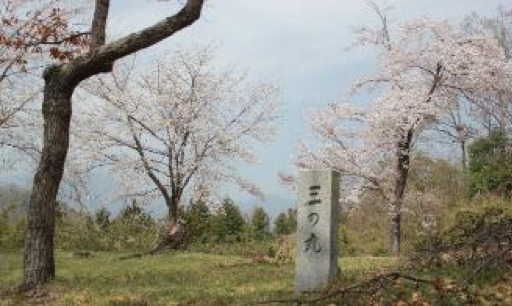
Katsuyama Castle Ruin
This mountain located on the north side of Tsuru bears the remains of Katsuyama Castle, the stronghold that once defended this valley and the major thoroughfare that passed through it. Explanations of the castle’s origin vary. The most widely accepted idea holds it was built in 1594 by a vassal of Toyotomi Hideyoshi (1537–1598) in order to defend against Hideyoshi’s rival, Tokugawa Ieyasu (1543–1616). The castle changed hands several times after its completion, but the longest holder was the Akimoto family, who ruled this area from 1633 to 1704. After the Akimoto family, the castle came under direct control of the shogun.
Today all that remains of the castle is a series of earthwork fortifications, a few stone walls, and some trenches thought to have been moats. Three large flat spaces were probably once enclosed by wooden fences to form baileys. On the mountain’s north ridge visitors will find the remains of an enclosure where it is believed the shogun’s tea was once stored. From the top of this 571 m–high mountain, it is easy to see why the site was chosen for a castle: not only does it command a view of the entire valley, but the mountain’s steep slopes are surrounded on three sides by the Katsura River. The fourth side is comprised of rugged mountain terrain, making it a formidable fortification.
※この解説文は観光庁の地域観光資源の多言語解説整備支援事業で作成しました
0 notes